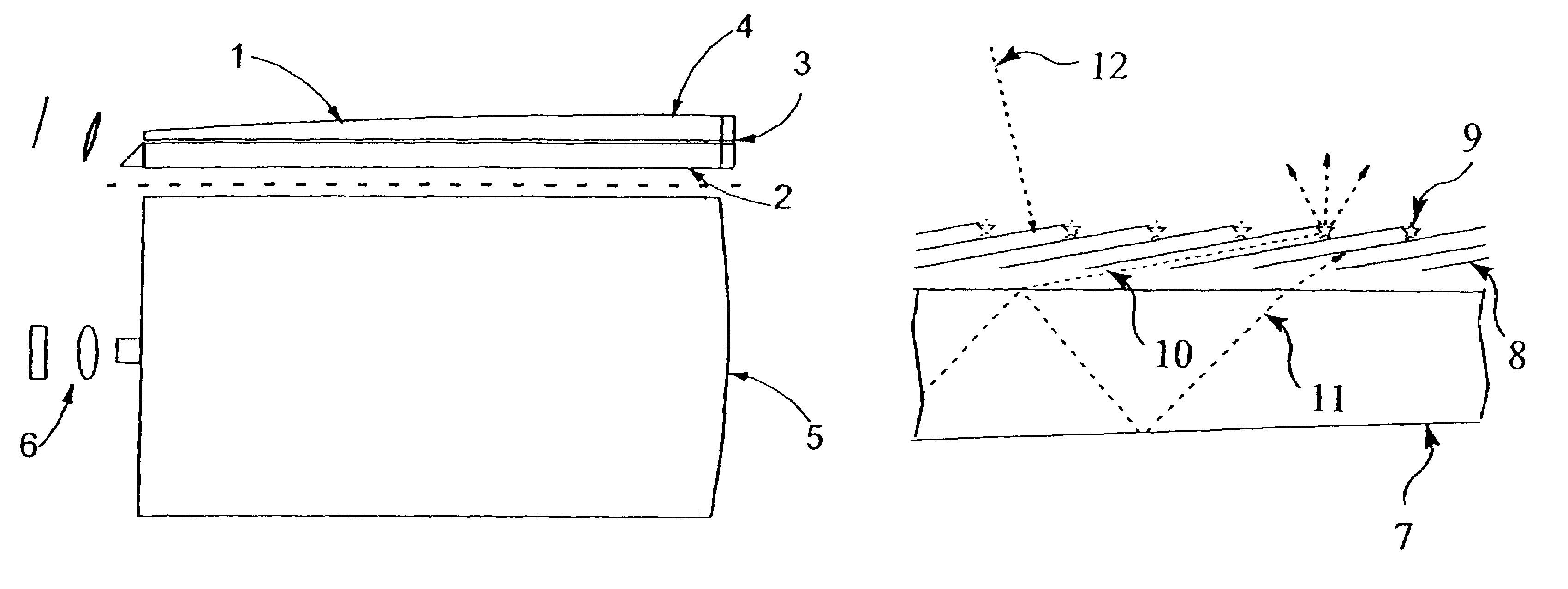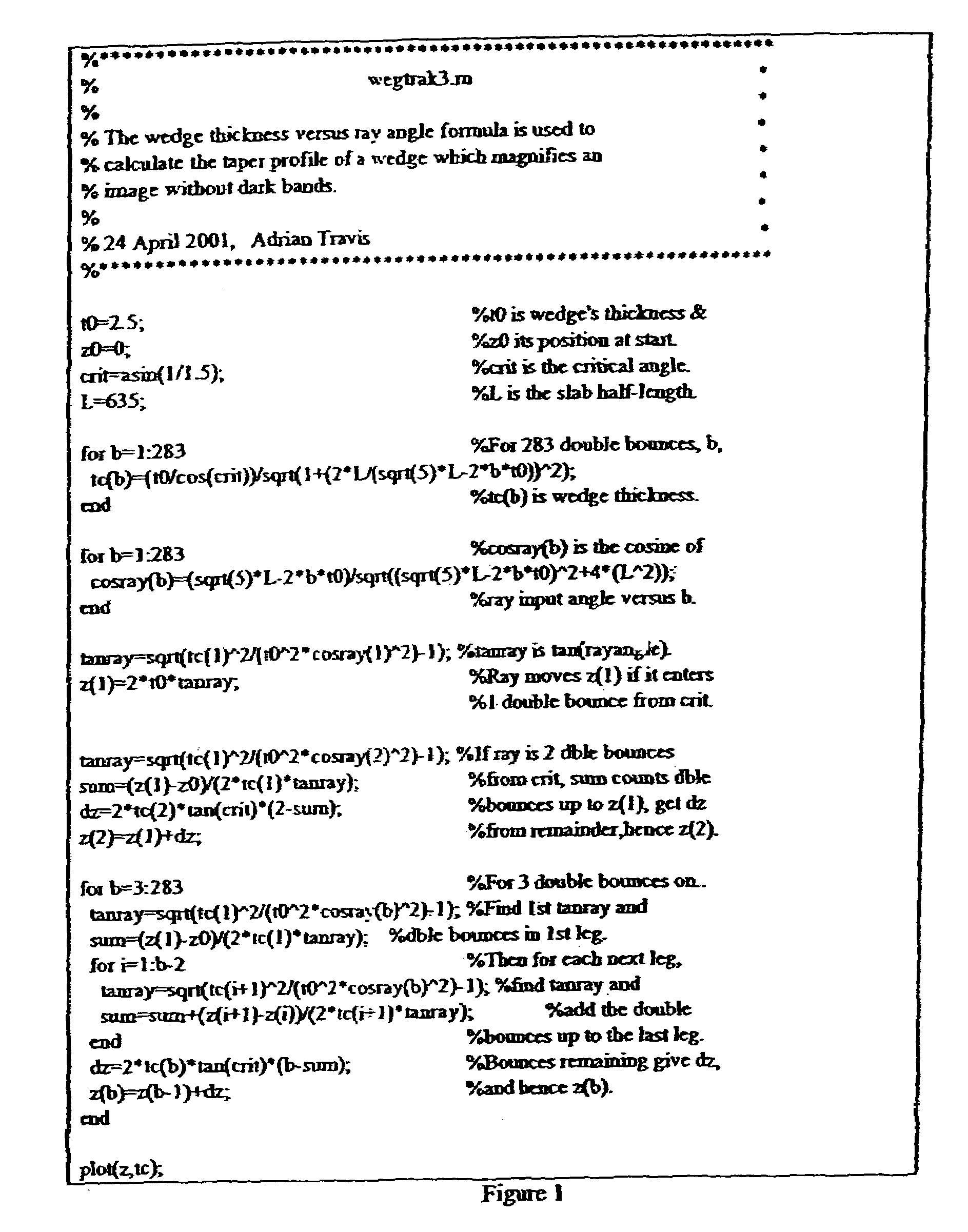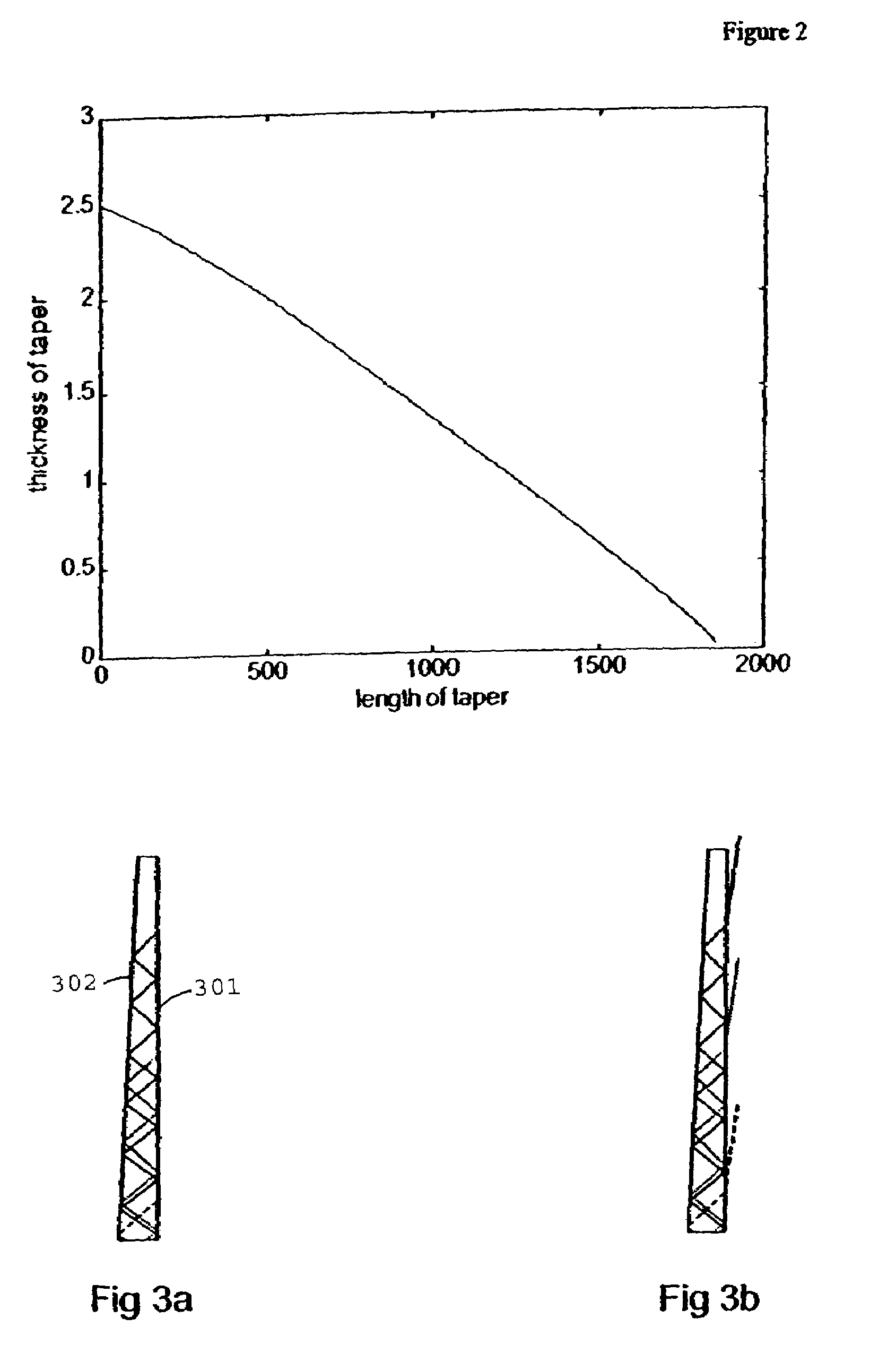Flat-panel display using tapered waveguide
a technology of tapered waveguides and flat panels, applied in television systems, identification means, instruments, etc., can solve problems such as prone to distortion of projected images, and achieve the effect of reducing blurring and improving contrast ratio
- Summary
- Abstract
- Description
- Claims
- Application Information
AI Technical Summary
Benefits of technology
Problems solved by technology
Method used
Image
Examples
Embodiment Construction
[0023]FIG. 7 shows the general layout contemplated by the invention. A projector 6 (or camera if the apparatus is operated backwards, or just a point light source for producing area illumination) emits (or receives) light forming an image made of an array of pixels into an edge 71 of a rectangular slab waveguide 2 where it propagates by reflection alternately off the main faces. This slab will usually have flat parallel faces, though this is not necessary. As the light propagates it spreads laterally, in the plane of the slab and perpendicular to the direction of propagation, by the far end 72 reaching the entire width of the slab. Thus the image is as it were magnified in the width direction. There it is collimated by a cylindrical lens 73 to enter the blunt end 74 of a slab waveguide 1 of equal width but tapering in height in the direction away from the projector. Here it is also internally reflected, but at ever increasing (steeper) angles 75-77 until at the critical angle given ...
PUM
| Property | Measurement | Unit |
|---|---|---|
| refractive index | aaaaa | aaaaa |
| thick | aaaaa | aaaaa |
| thick | aaaaa | aaaaa |
Abstract
Description
Claims
Application Information
 Login to View More
Login to View More - R&D
- Intellectual Property
- Life Sciences
- Materials
- Tech Scout
- Unparalleled Data Quality
- Higher Quality Content
- 60% Fewer Hallucinations
Browse by: Latest US Patents, China's latest patents, Technical Efficacy Thesaurus, Application Domain, Technology Topic, Popular Technical Reports.
© 2025 PatSnap. All rights reserved.Legal|Privacy policy|Modern Slavery Act Transparency Statement|Sitemap|About US| Contact US: help@patsnap.com



